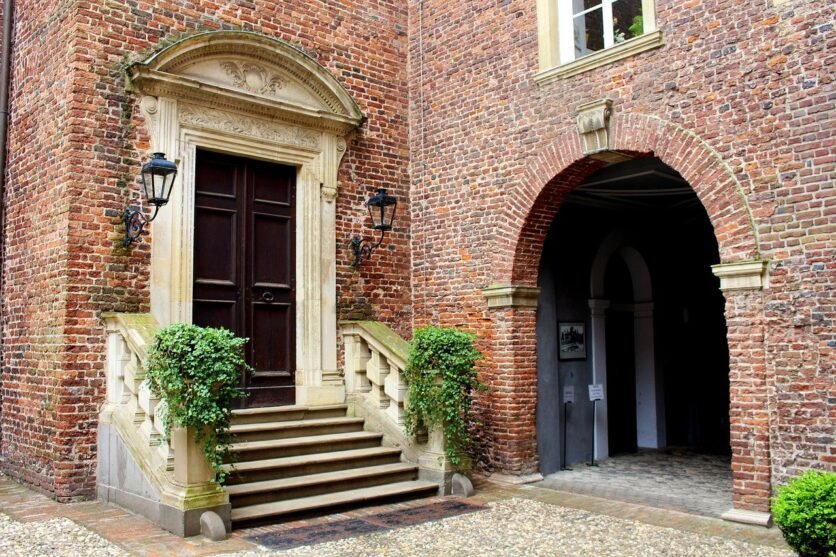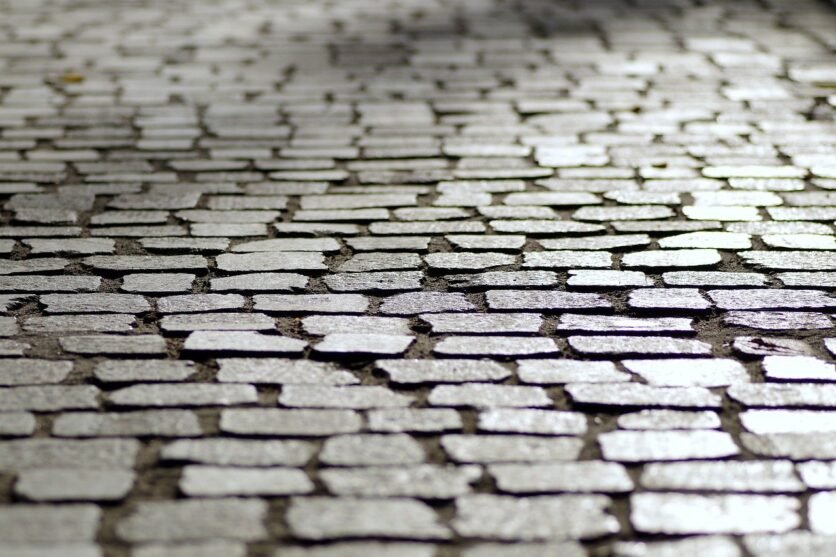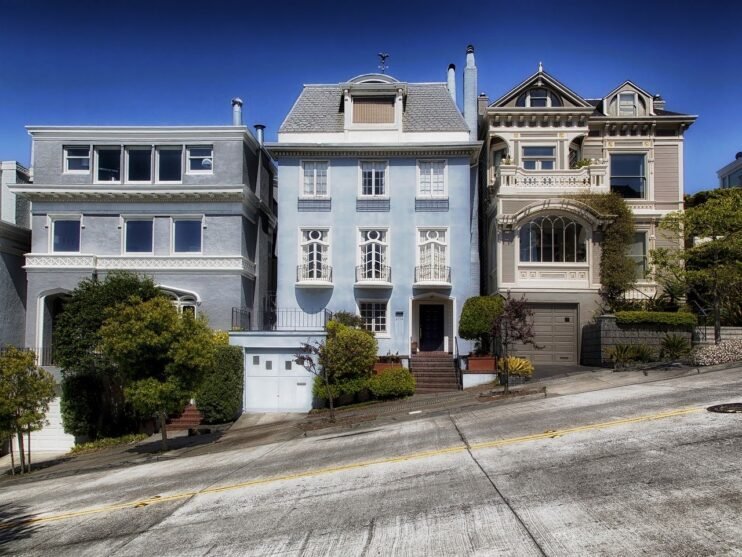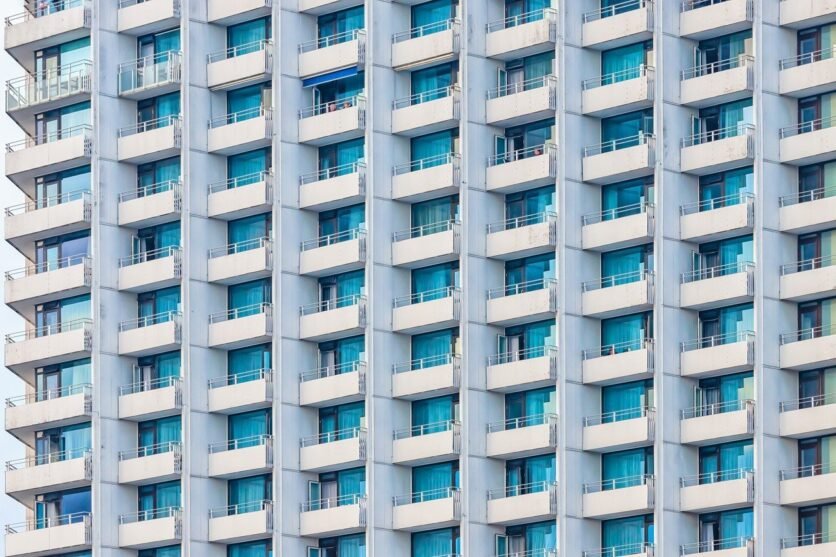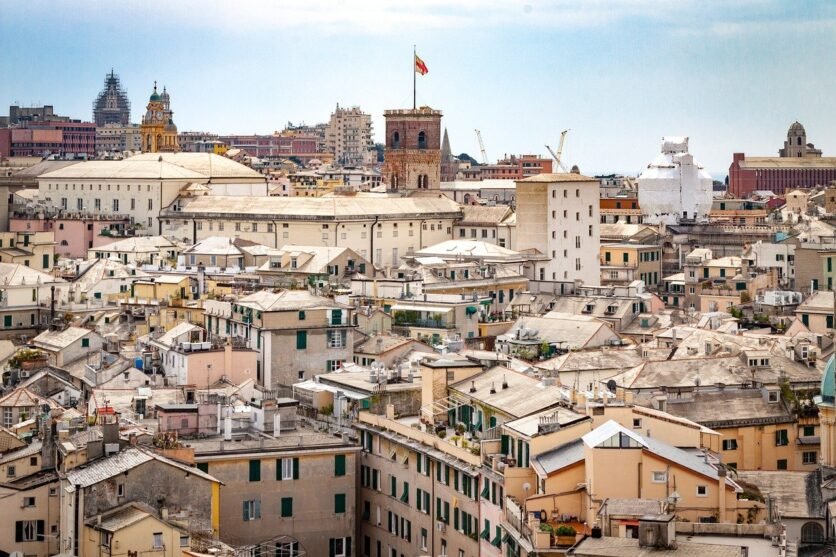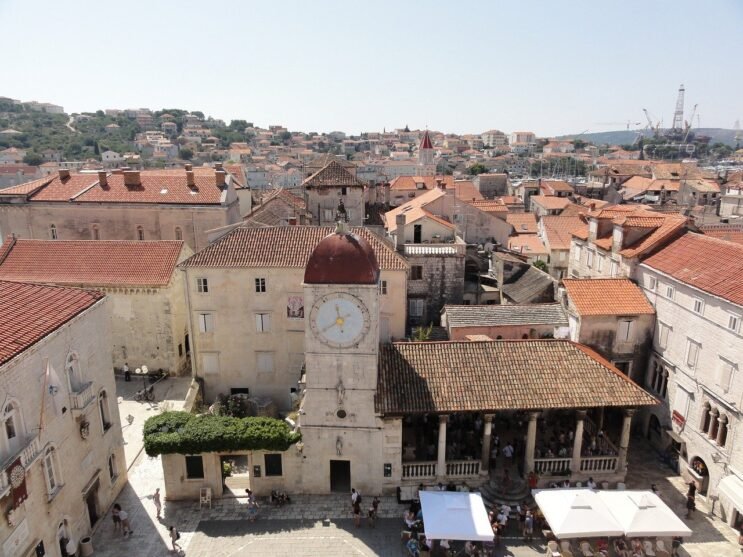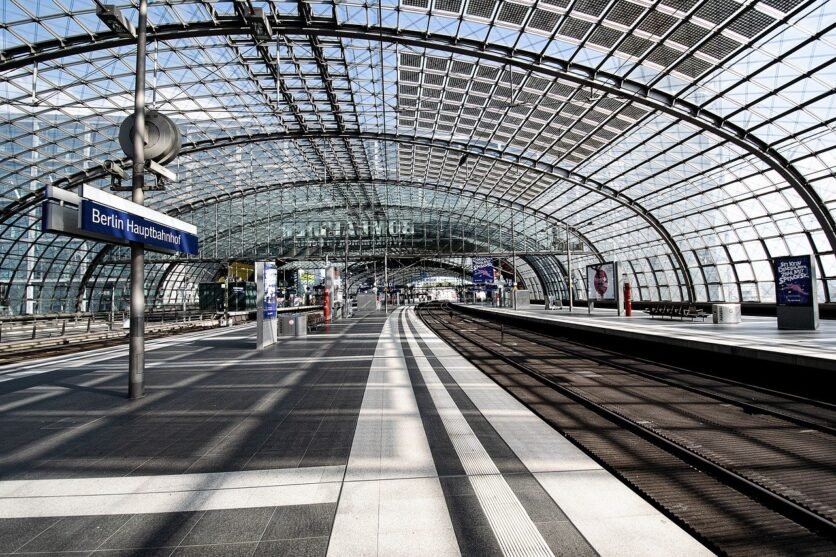Impermeabilizacion de Patios – Rehabilitaciones Tamarit
La impermeabilización de patios es esencial para preservar la integridad de áreas exteriores y evitar problemas relacionados con la humedad. Aquí hay algunas estrategias y consideraciones importantes para llevar a cabo una impermeabilización efectiva en patios:
- Elección de Materiales Resistentes al Agua:
- Utiliza materiales para la construcción del patio que sean resistentes al agua, como baldosas cerámicas, piedra natural, o madera tratada. Estos materiales pueden reducir la absorción de agua y mejorar la durabilidad del patio.
- Selladores para Superficies Porosas:
- Aplica selladores específicos para superficies porosas, como concreto o piedra, para crear una capa impermeable. Estos selladores ayudan a prevenir la penetración de agua y reducen la absorción de líquidos.
- Membranas Impermeabilizantes:
- Considera el uso de membranas impermeabilizantes, como las membranas de caucho EPDM, TPO o PVC, que ofrecen una barrera eficaz contra la humedad. Estas membranas pueden ser aplicadas sobre la superficie del patio.
- Pinturas Impermeabilizantes:
- Utiliza pinturas impermeabilizantes diseñadas para exteriores en patios de concreto o mampostería. Estas pinturas forman una capa protectora que repele el agua y protege contra la intemperie.
- Selladores de Juntas y Grietas:
- Inspecciona y sella todas las juntas y grietas en la superficie del patio. Los selladores flexibles ayudan a prevenir la entrada de agua en áreas propensas a movimientos o asentamientos.
- Revestimientos de Poliuretano:
- Los revestimientos de poliuretano son resistentes al agua y proporcionan una capa protectora duradera. Pueden aplicarse sobre superficies de concreto, creando una barrera impermeable.
- Instalación de Baldosas o Losetas con Sello Impermeable:
- Si estás utilizando baldosas o losetas en el patio, elige aquellas con un sello impermeable integrado. Esto ayuda a prevenir la absorción de agua a través de las juntas.
- Sistema de Drenaje:
- Asegúrate de que el patio cuente con un sistema de drenaje adecuado para evacuar el agua de lluvia. Los canales de drenaje y las pendientes adecuadas son esenciales para prevenir acumulaciones de agua.
- Mantenimiento Regular:
- Establece un programa de mantenimiento regular que incluya la inspección periódica de la impermeabilización del patio. Realiza reparaciones o retoques según sea necesario.
- Considera la Pendiente del Terreno:
- Diseña la pendiente del patio de manera que favorezca el drenaje natural del agua lejos de la estructura. Esto ayuda a prevenir la acumulación de agua alrededor del patio.
- Aplicación de Revestimientos Antideslizantes:
- Para mejorar la seguridad, considera la aplicación de revestimientos antideslizantes sobre la superficie del patio, especialmente si está expuesto a condiciones húmedas.
Impermeabilizacion de Baldosas – Rehabilitaciones Tamarit
La elección de revestimientos impermeabilizantes no solo brinda protección contra la humedad, sino que también puede agregar estilo y estética a diversas superficies. Aquí hay algunos tipos de revestimientos impermeabilizantes que combinan estilo y protección:
- Pinturas Impermeabilizantes Acrílicas o Elastoméricas:
- Estas pinturas no solo proporcionan una barrera resistente al agua, sino que también están disponibles en una variedad de colores y acabados. Son ideales para superficies como paredes exteriores y techos.
- Revestimientos de Poliuretano:
- Los revestimientos de poliuretano son duraderos y resistentes al agua. Además de proteger contra la humidity, están disponibles en varias texturas y colores, lo que permite personalizar la apariencia de la superficie.
- Membranas de PVC o TPO:
- Láminas de Caucho EPDM:
- Las láminas de caucho EPDM son versátiles y se utilizan comúnmente en techos. Vienen en diferentes grosores y se pueden adaptar a diversos diseños arquitectónicos, proporcionando una capa impermeable y resistente.
- Revestimientos de Silicona:
- Los revestimientos de silicona no solo protegen contra el agua, sino que también tienen propiedades reflectantes que pueden mejorar la eficiencia energética. Están disponibles en varios colores y pueden aplicarse en techos y paredes.
- Pinturas de Pisos Epoxi o Poliuretano:
- Para superficies de pisos, las pinturas epoxi o de poliuretano no solo impermeabilizan, sino que también agregan durabilidad y estilo. Están disponibles en una amplia gama de colores y acabados.
- Revestimientos de Caucho Líquido:
- Los revestimientos de caucho líquido pueden aplicarse en diversas superficies, como techos y terrazas. Además de proporcionar impermeabilización, también pueden mejorar la estética de la superficie.
- Cubiertas y Losetas con Sello Impermeable:
- Para patios y terrazas, las cubiertas y losetas con sello impermeable ofrecen una solución estilizada y funcional. Vienen en una variedad de estilos y patrones para adaptarse a diferentes preferencias de diseño.
- Revestimientos de Polisulfuro:
- Los revestimientos de polisulfuro, utilizados en aplicaciones como cubiertas, pueden ofrecer una resistencia excepcional al agua. También pueden aplicarse en diferentes colores para mejorar la estética.
- Pinturas Intumescentes:
- En aplicaciones específicas, como en estructuras de acero, las pinturas intumescentes no solo proporcionan protección contra el fuego, sino que también pueden agregar una capa estética atractiva.
Impermeabilizacion de terrazas Ajardinadas – Rehabilitaciones Tamarit
La impermeabilización de techos verdes no solo ofrece protección contra la humedad, sino que también contribuye a la sostenibilidad y protección ambiental al promover beneficios como la eficiencia energética y la mejora del entorno urbano. Aquí te presento algunas consideraciones y estrategias clave para la impermeabilización de techos verdes:
- Membranas Impermeabilizantes Resistentes a las Raíces:
- Capas de Drenaje:
- Incorpora capas de drenaje en el sistema de impermeabilización para garantizar un adecuado drenaje del exceso de agua. Esto es esencial para prevenir la acumulación de agua en el techo y reducir el riesgo de leaks.
- Sustratos y Materiales de Plantación:
- Selecciona sustratos y materiales de plantación que sean livianos, permitan el drenaje y promuevan el crecimiento saludable de las plantas. Asegúrate de que estos materiales no comprometan la integridad de la impermeabilización.
- Sistemas de Riego Eficientes:
- Implementa sistemas de riego eficientes que optimicen el uso del agua y proporcionen la cantidad necesaria para el crecimiento de las plantas sin saturar el sistema de impermeabilización.
- Membranas Reflectantes o Cool Roofs:
- Considera la utilización de membranas impermeabilizantes reflectantes, conocidas como “cool roofs”. Estas membranas ayudan a reducir la absorción de calor, mejorando la eficiencia energética y reduciendo la carga térmica en el edificio.
- Impermeabilización de Alta Resistencia UV:
- Dado que los techos verdes están expuestos a la luz solar directa, elige membranas impermeabilizantes con alta resistencia a los rayos UV para prolongar su vida útil.
- Revestimientos y Pinturas Ecológicos:
- Para la impermeabilización, considera el uso de revestimientos y pinturas ecológicos, bajos en VOC (compuestos orgánicos volátiles) para minimizar el impacto ambiental.
- Monitoreo y Mantenimiento Regular:
- Establece un programa de monitoreo y mantenimiento regular para asegurarte de que la impermeabilización del techo verde esté en buen estado. Realiza inspecciones periódicas y repara cualquier daño o desgaste detectado.
- Sistemas de Retención de Agua:
- Incorpora sistemas de retención de agua en el diseño del techo verde para almacenar agua de lluvia y minimizar el escurrimiento. Esto puede ayudar a reducir la carga en los sistemas de drenaje urbano y aprovechar el agua de manera sostenible.
- Filtración Biológica:
- Al considerar las membranas impermeabilizantes, elige aquellas que permitan la filtración biológica. Esto implica que las membranas permitan el paso de ciertos nutrientes beneficiosos para el sustrato y las plantas.
- Beneficios Ambientales Adicionales:
- Ten en cuenta los beneficios adicionales de los techos verdes, como la mejora de la calidad del aire, la reducción del efecto isla de calor urbano y la promoción de hábitats para la biodiversidad.
Impermeabilizaciones en Fachadas – Rehabilitaciones Tamarit
La impermeabilización de fachadas es esencial para conservar la estética y funcionalidad de un edificio, protegiéndolo contra los efectos dañinos del agua y la humedad. Aquí te presento algunas estrategias y consideraciones clave para llevar a cabo una impermeabilización efectiva de fachadas:
- Elección de Materiales Impermeables:
- Utiliza materiales de revestimiento exterior que sean intrínsecamente impermeables o que hayan sido tratados con selladores y recubrimientos impermeabilizantes.
- Revestimientos Elastoméricos:
- Los revestimientos elastoméricos son flexibles y se expanden y contraen con los cambios de temperatura. Estos revestimientos son eficaces para sellar grietas y proteger la fachada contra la entrada de agua.
- Selladores para Juntas y Grietas:
- Inspecciona todas las juntas y grietas en la fachada y aplica selladores de alta calidad. Estos selladores evitan la infiltración de agua y ayudan a mantener la integridad estructural.
- Membranas Impermeabilizantes:
- Aplica membranas impermeabilizantes diseñadas para facades. Estas membranas proporcionan una barrera efectiva contra la humedad y son particularmente útiles en áreas propensas a la lluvia intensa o exposición directa al agua.
- Revestimientos Transpirables:
- Considera el uso de revestimientos transpirables que permitan que la humedad acumulada en el interior del edificio escape hacia el exterior, evitando problemas de condensación y moho.
- Reparación de Revestimientos Dañados:
- Realiza reparaciones inmediatas en revestimientos dañados para prevenir que el agua penetre en las capas subyacentes. Esto es crucial para evitar daños estructurales y mantener la estética.
- Tratamientos Hidrófugos:
- Aplica tratamientos hidrófugos en materiales porosos como ladrillo, piedra o concreto. Estos tratamientos repelen el agua sin alterar la apariencia estética de la fachada.
- Pinturas Impermeabilizantes:
- Utiliza pinturas impermeabilizantes en fachadas expuestas a condiciones climáticas adversas. Estas pinturas forman una barrera resistente al agua y están disponibles en diversos colores para mantener la estética.
- Drenaje Eficiente:
- Asegúrate de que la fachada tenga un sistema de drenaje eficiente para canalizar el agua lejos de la estructura. Los canalones y bajantes deben estar en buen estado y libres de obstrucciones.
- Preventive maintenance:
- Implementa un programa regular de mantenimiento preventivo que incluya inspecciones periódicas, limpieza de canalones y reparación inmediata de cualquier daño detectado.
- Consideraciones Estéticas:
- Al seleccionar materiales y realizar reparaciones, considera la estética del edificio. Busca soluciones que no solo sean efectivas desde el punto de vista técnico, sino que también mantengan o mejoren la apariencia arquitectónica.
Impermeabilizacion de techos inclinados – Rehabilitaciones Tamarit
La impermeabilización de techos inclinados presenta desafíos específicos debido a la pendiente, ya que el agua tiende a escurrir más rápido. Aquí tienes algunas soluciones específicas para impermeabilizar techos inclinados:
- Membranas Asfálticas o Bituminosas:
- Las membranas asfálticas o bituminosas son opciones comunes para techos inclinados. Estas membranas impermeabilizantes se aplican en capas y ofrecen una barrera efectiva contra el agua.
- Tejas o Baldosas Impermeables:
- Utiliza tejas o baldosas diseñadas específicamente para techos inclinados. Estos materiales proporcionan una cubierta resistente al agua y están disponibles en una variedad de estilos para adaptarse a las preferencias estéticas.
- Láminas de Caucho EPDM:
- Las láminas de caucho EPDM son flexibles y resistentes al agua. Se utilizan comúnmente en techos planos, pero también son adecuadas para techos inclinados. Se instalan en una sola hoja, reduciendo las posibilidades de filtraciones.
- Paneles Metálicos con Recubrimientos Específicos:
- Sistemas de Membranas de PVC o TPO:
- Las membranas de PVC o TPO son opciones duraderas para techos inclinados. Estas membranas termoplásticas son resistentes al agua y a los rayos UV, y se pueden instalar en láminas grandes o en rollos.
- Sistemas de Tejado Verdes Inclinados:
- Si bien los techos verdes son más comunes en superficies planas, se pueden adaptar para techos inclinados. Utiliza sistemas de membranas impermeabilizantes compatibles con techos verdes inclinados para aprovechar los beneficios de la sostenibilidad y la eficiencia energética.
- Revestimientos de Poliuretano:
- Los revestimientos de poliuretano, aplicados en forma líquida, pueden adaptarse a la pendiente del techo y proporcionar una capa continua y resistente al agua.
- Sistemas de Canalones y Bajantes Eficientes:
- Instala sistemas de canalones y bajantes eficientes para manejar el rápido escurrimiento del agua en techos inclinados. Esto evita acumulaciones de agua y ayuda a preservar la impermeabilización.
- Selladores Específicos para Techos Inclinados:
- Utiliza selladores diseñados específicamente para techos inclinados en juntas, conexiones y puntos vulnerables. Estos selladores deben ser flexibles y resistentes a los movimientos estructurales.
- Mantenimiento Regular:
- Realiza un mantenimiento regular para inspeccionar la integridad de la impermeabilización. Repara cualquier daño o desgaste de manera oportuna para evitar filtraciones.
- Instalación Profesional:
- La instalación profesional es clave para garantizar que la impermeabilización se realice correctamente, especialmente en techos inclinados. Asegúrate de contar con expertos en impermeabilización para lograr resultados duraderos.
Impermeabilizacion de Balcones – Rehabilitaciones Tamarit
La impermeabilización de balcones es esencial para prevenir daños por filtraciones y asegurar la durabilidad de la estructura. Aquí tienes algunas estrategias y consideraciones clave para una impermeabilización efectiva de balcones:
- Inspección Detallada:
- Antes de comenzar cualquier trabajo de impermeabilización, realiza una inspección detallada del balcón para identificar grietas, juntas abiertas, y otros puntos vulnerables por donde podría filtrarse el agua.
- Reparación de Superficies Dañadas:
- Repara cualquier superficie dañada, incluyendo grietas en el concreto o daños en las baldosas. Las reparaciones previas son esenciales para garantizar una impermeabilización efectiva.
- Selladores de Juntas:
- Utiliza selladores de juntas flexibles en áreas propensas a movimientos estructurales, como las conexiones entre la losa del balcón y las paredes. Estos selladores previenen la infiltración de agua en estas áreas críticas.
- Membranas Impermeabilizantes:
- Aplica membranas impermeabilizantes específicas para balcones. Las membranas de caucho EPDM, TPO o PVC son opciones comunes que proporcionan una barrera eficaz contra el agua.
- Pinturas Impermeabilizantes:
- Utiliza pinturas impermeabilizantes diseñadas para exteriores en balcones. Estas pinturas forman una capa protectora resistente al agua y a los elementos.
- Drenaje Adecuado:
- Asegúrate de que el balcón tenga un sistema de drenaje adecuado para evacuar el agua de lluvia. Los desagües y los canalones deben estar limpios y en buen estado de funcionamiento.
- Pendiente Adecuada:
- Diseña la superficie del balcón con una pendiente adecuada para facilitar el drenaje del agua hacia los desagües. Esto evita la acumulación de agua estancada que puede dañar la impermeabilización.
- Materiales Resistentes a la Intemperie:
- Utiliza materiales para el revestimiento del balcón que sean resistentes a la intemperie y al sol. Las baldosas cerámicas, la piedra natural o la madera tratada son opciones que pueden soportar las condiciones exteriores.
- Revestimientos Antideslizantes:
- Para mejorar la seguridad, considera la aplicación de revestimientos antideslizantes en el suelo del balcón. Estos revestimientos proporcionan tracción adicional, especialmente en condiciones húmedas.
- Tratamientos Hidrófugos:
- Aplica tratamientos hidrófugos en materiales porosos como el concreto o la piedra. Estos tratamientos repelen el agua y reducen la absorción, contribuyendo a la impermeabilización.
- Sistemas de Techo Verde o Jardín en Balcón:
- Si es posible, considera la instalación de un sistema de techo verde o un pequeño jardín en el balcón. Además de los beneficios estéticos, estas soluciones pueden contribuir a la gestión sostenible del agua y mejorar la eficiencia energética.
- Mantenimiento Regular:
Impermeabilizacion de depositos – Rehabilitaciones Tamarit
La impermeabilización de depósitos de agua es crucial para garantizar la calidad del líquido almacenado y prevenir la contaminación. Aquí tienes algunas estrategias y consideraciones clave para llevar a cabo una impermeabilización efectiva en depósitos de agua:
- Elección de Materiales Aprobados para Agua Potable:
- Utiliza materiales específicamente aprobados para agua potable en la construcción y revestimiento del depósito. Los materiales deben cumplir con estándares de seguridad y no liberar sustancias tóxicas en el agua.
- Membranas Impermeabilizantes Adecuadas:
- Aplica membranas impermeabilizantes diseñadas específicamente para aplicaciones de agua potable. Las membranas de caucho EPDM, láminas de PVC o TPO son opciones comunes que proporcionan una barrera efectiva.
- Revestimientos Epoxi o Poliuretano Aprobados:
- Utiliza revestimientos epoxi o poliuretano aprobados para contacto con agua potable. Estos recubrimientos forman una capa impermeable y resistente, protegiendo la calidad del agua almacenada.
- Sellado de Juntas y Conexiones:
- Inspecciona y sella todas las juntas y conexiones en el depósito. Es crucial prevenir leaks en estos puntos vulnerables para mantener la integridad de la impermeabilización.
- Pinturas Epoxi para Interiores:
- En el caso de depósitos interiores, considera el uso de pinturas epoxi diseñadas para aplicaciones en contacto con agua potable. Estas pinturas proporcionan una capa protectora y son seguras para el consumo de agua.
- Sistema de Drenaje Eficiente:
- Asegúrate de que el depósito cuente con un sistema de drenaje eficiente para evitar la acumulación de agua en áreas circundantes y reducir la presión sobre las paredes del depósito.
- Impermeabilización de Conexiones de Fontanería:
- Presta especial atención a la impermeabilización de las conexiones de fontanería que ingresan o salen del depósito. Utiliza selladores y materiales adecuados para garantizar la estanqueidad.
- Inspecciones y Pruebas de Estanqueidad:
- Realiza inspecciones regulares y pruebas de estanqueidad para detectar posibles filtraciones. La detección temprana y la reparación inmediata son esenciales para mantener la calidad del agua almacenada.
- Detección y Reparación de Grietas:
- Inspecciona las paredes y el fondo del depósito en busca de grietas. Si se encuentran grietas, repáralas utilizando materiales impermeabilizantes compatibles con agua potable.
- Protección contra Rayos UV:
- Si el depósito está expuesto a la luz solar directa, considera la aplicación de recubrimientos o pinturas que protejan contra los daños causados por los rayos UV y prolonguen la vida útil de la impermeabilización.
- Control de la Calidad del Agua:
- Mantén un control regular de la calidad del agua almacenada para detectar cualquier cambio que pueda indicar problemas de impermeabilización. Esto incluye pruebas de laboratorio y evaluación de olores y sabores.
- Cumplimiento de Normativas Locales:
- Asegúrate de cumplir con las normativas y regulaciones locales relacionadas con la impermeabilización de depósitos de agua potable. Consulta con autoridades sanitarias o de construcción para garantizar el cumplimiento.
Servicios de Impermeabilizaciones – Rehabilitaciones Tamarit
1. Impermeabilización de tejados
2. Impermeabilización de terrazas
3. Rehabilitación de cubiertas
5. Impermeabilización de azoteas
6. Impermeabilización de fachadas
7. Tejados impermeables
8. Terrazas impermeabilizadas
9. Impermeabilización de piscinas
10. Impermeabilización de terrazas transitables
11. Mantenimiento de tejados
12. Productos para impermeabilizar terrazas
13. Empresas de impermeabilización en Madrid
14. Tejas para impermeabilizar
15. Impermeabilización de rasilla catalana
16. Cubiertas impermeables
17. Impermeabilización de terrazas con tejas curvas
18. Impermeabilización de azoteas de zinc
19. Garantía en impermeabilizaciones
20. Impermeabilización de deslunados
Impermeabilización de tejados en valencia
Impermeabilización de Tejados: Protegiendo tu Hogar contra las Inclemencias del Tiempo
Cuando se trata de mantener nuestro hogar en perfectas condiciones, la impermeabilización de tejados se convierte en un factor esencial para la protección contra las adversidades climáticas. Un techo en buen estado no solo añade valor a la propiedad, sino que también resguarda a sus habitantes de filtraciones, humedades y otros problemas derivados de la exposición constante a los elementos. En este artículo, exploraremos la importancia de la impermeabilización de tejados y cómo este proceso puede marcar la diferencia en la durabilidad y el bienestar de tu hogar.
1. Protección contra Filtraciones: La función principal de la impermeabilización de tejados es prevenir filtraciones de agua. Las filtraciones pueden causar daños estructurales significativos, afectando la integridad de las paredes, el techo y otros elementos de la estructura. Una impermeabilización eficaz actúa como una barrera contra el agua, evitando que penetre en el interior de la vivienda.
2. Prolongación de la Vida Útil del Techo: Los elementos climáticos, como la lluvia, la nieve y la exposición al sol, pueden desgastar rápidamente la superficie de un techo. La impermeabilización no solo previene daños causados por el agua, sino que también protege contra la erosión y la degradación prematura, prolongando la vida útil del techo.
3. Ambiente Interior Saludable: Las filtraciones de agua no solo afectan la estructura del edificio, sino que también pueden dar lugar a la formación de moho y humedad en el interior. Estos problemas no solo son perjudiciales para la salud, sino que también pueden causar daños irreparables a la propiedad. Una impermeabilización adecuada mantiene un ambiente interior seco y saludable.
4. Ahorro en Costos de Reparación: La impermeabilización preventiva es una inversión inteligente que puede ayudarte a evitar costosas reparaciones a largo plazo. Al proteger tu techo desde el principio, estás reduciendo la probabilidad de enfrentar daños estructurales que requieran reparaciones costosas y tiempo adicional.
5. Sostenibilidad y Eficiencia Energética: Una impermeabilización de alta calidad no solo protege contra el agua, sino que también puede contribuir a la eficiencia energética de tu hogar. Al mantener el techo en buen estado, se evitan pérdidas de calor y se mejora el rendimiento térmico, lo que puede traducirse en ahorros en costos de calefacción y refrigeración.
La impermeabilización de tejados es una inversión crucial para la protección y el bienestar de tu hogar. Desde prevenir filtraciones hasta prolongar la vida útil de tu techo, este proceso desempeña un papel fundamental en el mantenimiento a largo plazo. No subestimes el valor de una impermeabilización de calidad para mantener tu hogar seco, seguro y en óptimas condiciones. Invierte en la protección de tu propiedad y disfruta de la tranquilidad que solo una impermeabilización eficaz puede proporcionar.
Rehabilitación de Cubiertas: Renovando la Protección de tu Edificio
Rehabilitación de Cubiertas: Renovando la Protección de tu Edificio
El paso del tiempo, las inclemencias del clima y otros factores pueden afectar la integridad de las cubiertas de nuestros edificios. La palabra clave “Rehabilitación de cubiertas” cobra relevancia en este contexto, ya que representa el proceso esencial para renovar y fortalecer la protección de la estructura superior de una edificación. En este artículo, exploraremos la importancia de la rehabilitación de cubiertas y cómo este procedimiento puede ser clave para garantizar la longevidad y el rendimiento de tu edificio.
1. Diagnóstico Profesional: Antes de emprender cualquier rehabilitación de cubiertas, es crucial realizar un diagnóstico profesional. Este análisis identificará los problemas existentes, desde pequeñas filtraciones hasta daños estructurales más significativos. Un diagnóstico preciso proporciona la base para un plan de rehabilitación efectivo.
2. Renovación de Materiales: La rehabilitación de cubiertas implica la renovación o reparación de materiales desgastados o dañados. Desde tejas hasta membranas impermeabilizantes, cada elemento desempeña un papel crucial en la protección del edificio. La elección de materiales de calidad durante el proceso de rehabilitación garantiza durabilidad y resistencia a futuros desafíos climáticos.
3. Mejora del Aislamiento Térmico: The rehabilitación de cubiertas también brinda la oportunidad de mejorar el aislamiento térmico del edificio. La incorporación de materiales aislantes durante el proceso no solo fortalece la protección contra el agua, sino que también contribuye a la eficiencia energética, ayudando a mantener una temperatura interior óptima durante todas las estaciones.
4. Prevención de Filtraciones y Humedades: Uno de los principales objetivos de la rehabilitación de cubiertas es prevenir filtraciones y humedades. La aplicación de nuevas capas de impermeabilización o la reparación de las existentes asegura que el agua no penetre en la estructura del edificio, evitando daños a largo plazo y creando un ambiente interior seguro y seco.
5. Valor Agregado al Edificio: La rehabilitación de cubiertas no solo se trata de mantener la funcionalidad; también agrega valor estético y financiero a tu edificio. Un techo renovado y bien cuidado mejora la apariencia general, lo que puede ser un factor decisivo en la valoración del inmueble en el mercado.

